Yeti… as in the mythical Himalayan beast? While the Colorado-based cult brand has written some very exciting chapters in the history of analogue mountain, its eMTBs portfolio is still very thin. After 5 years in development, the € 13,790 Yeti E160 T1 with Shimano EP8 motor is supposed to plough its way through anything you throw at it. Was Yeti’s electric debut a success?
An eMTB for racers. Does it even make sense? Like the Lapierre Overvolt GLP 2, Yeti’s 160E was designed to meet the needs of E-EWS riders. But since we’re always skeptical about flamboyant marketing slogans, we wanted to test the new Yeti ourselves and see how it performs outside the tapes.
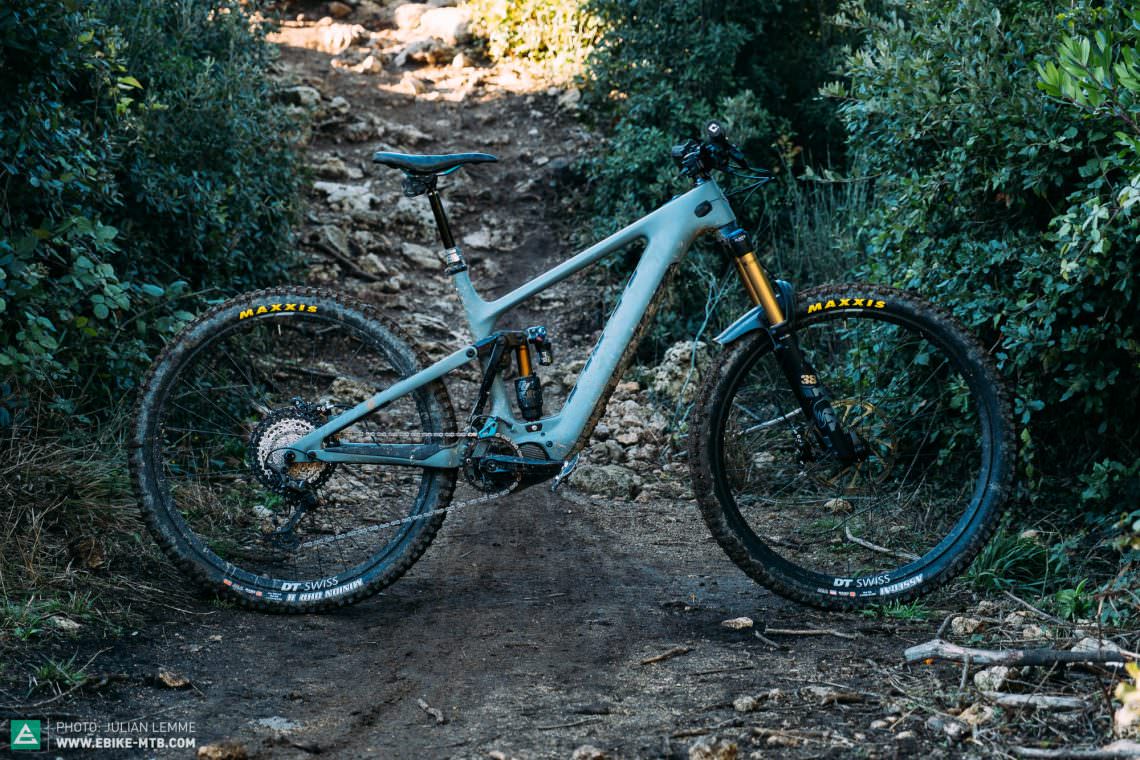
23.14 kg in size L | € 13,790 | Manufacturer’s website
The 160E relies on a Shimano EP8 complete system, which draws its power from a 630 Wh battery integrated in the slim down tube of the carbon frame. Motor components such as the cables, sensors and remotes, are all integrated and safely tucked away into the bike. In the cockpit area, the data cables are routed through the handlebars, which Yeti developed in house specifically for their brand-new 23.14 kg eMTB. The high-quality TURQ carbon frame is packed with nice details: a generously-sized seat and chainstay protector prevents scratches and chainslap and Yeti’s legendary mascotte drifts across the top tube.
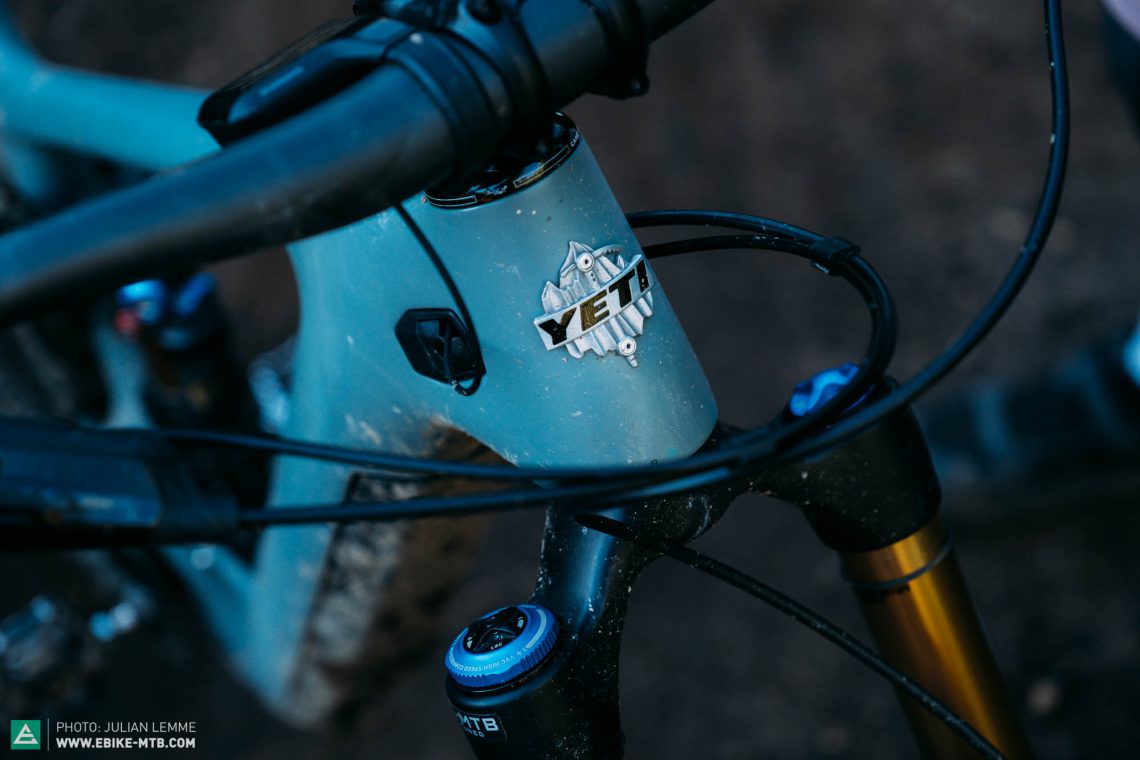
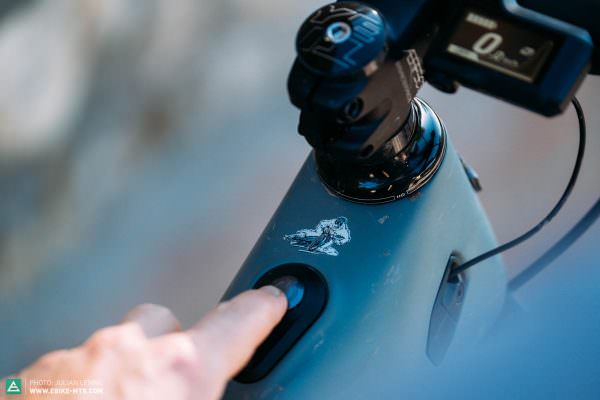
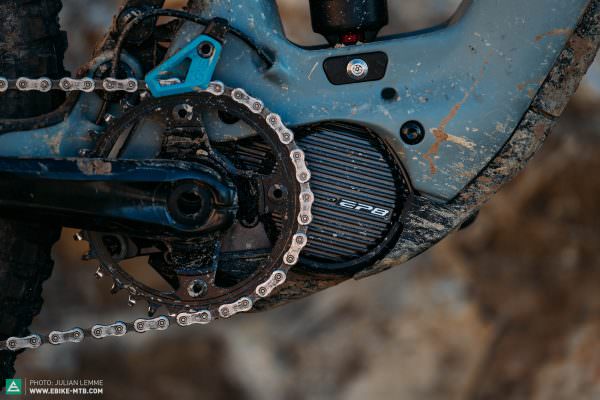
Sixfinity: suspension performance is high on Yeti’s list of priorities.
Although the 160E is Yeti’s first eMTB, the engineering team behind it knows a thing or two about mountain bikes. In the analogue mountain biking world, Yeti are well known for their extraordinary rear suspension systems, in particular the Switch Infinity link. But since the motor of the 160E doesn’t leave enough room for the latter, Yeti’s engineers had to ditch the proven Switch-Infinity link and develop a new system that allows them to adapt the kinematics and suspension characteristics of the bike to eMTBing. The result is called Sixfinity. As if the system wasn’t complex enough, Yeti added a flip chip to the lower shock mount. Nevertheless, this was a very clever move, because the flip chips allow you to adjust the progression of the rear suspension in three stages (25%, 30% and 35%) to suit your preferences and riding style. Sounds complicated? It isn’t! We recommend starting off in the middle position (30%) and changing the setting according to your needs: if you ride hard and hit the big stuff on a regular basis, you may flip the chip to the super progressive 35% setting. On the other hand, if you only use little travel and barely push the O-ring past the bottom of the shaft, you should run the 20% progression setting. Changing the position of the flip chip is easy and straight-forward. Read our riding impressions to find out how the complex system influences the performance of the 160E on the trail and to what extent the flip chip changes the character of the bike.
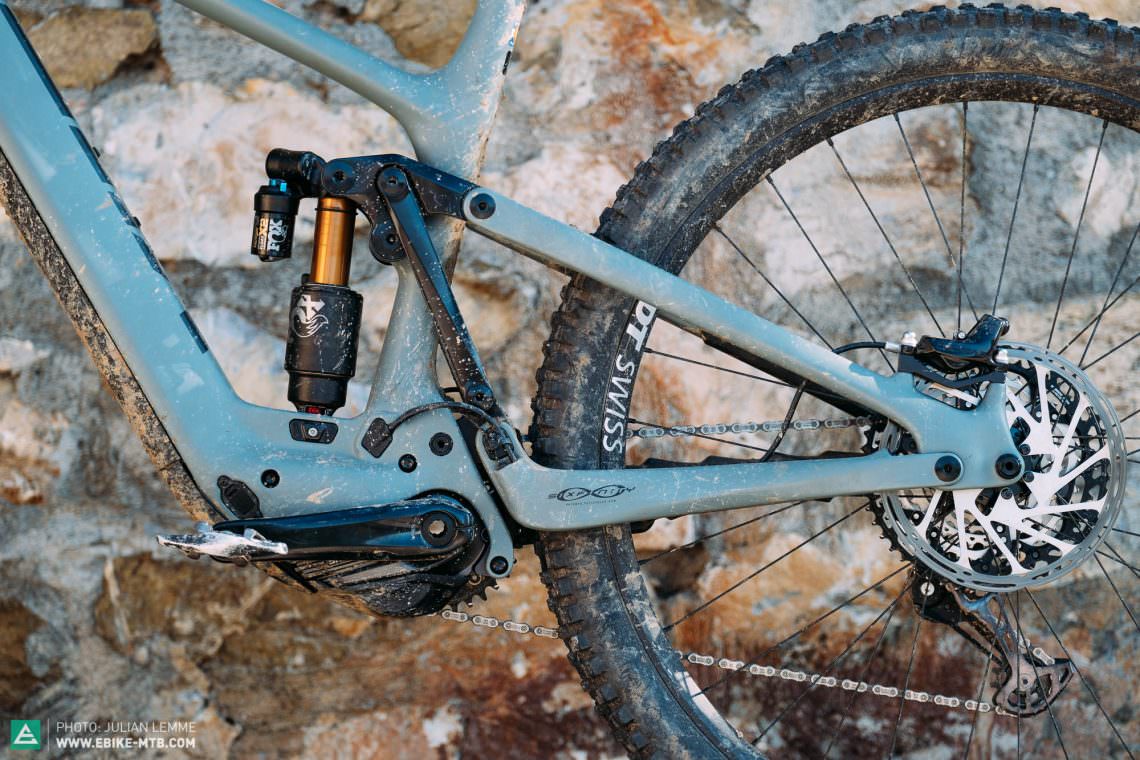
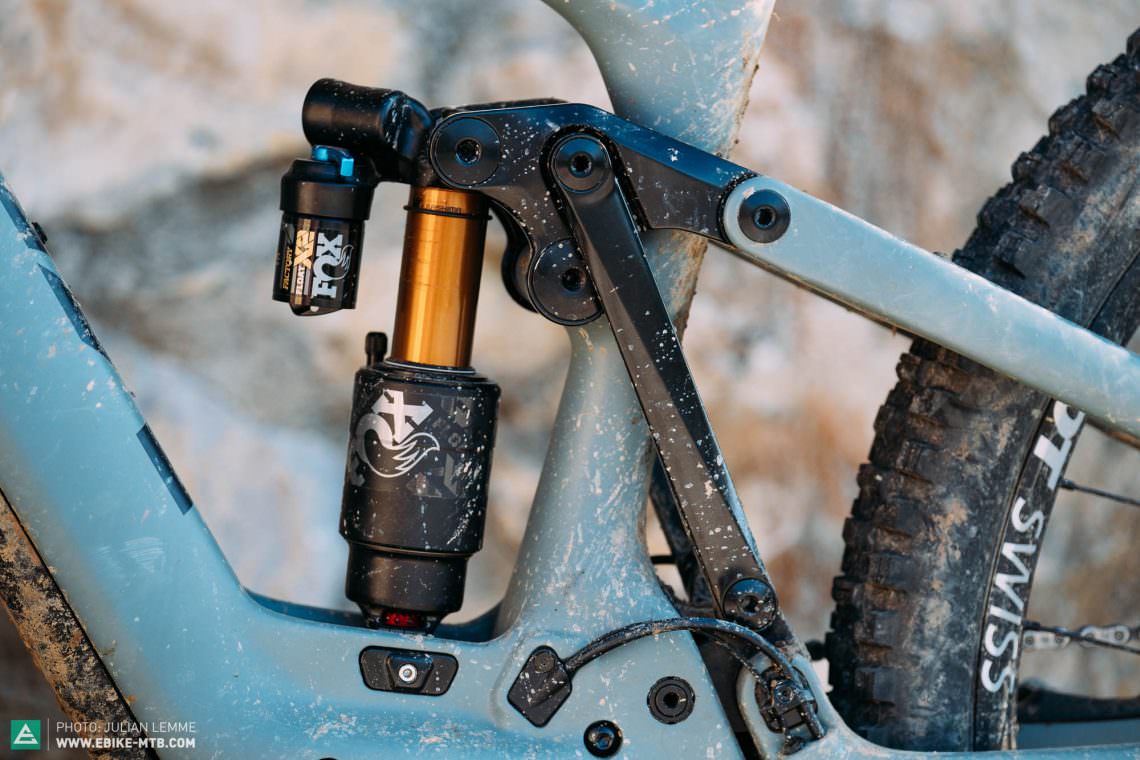
The geometry of the Yeti 160E
As far as geometry goes, Yeti played it safe, relying on the experience gained from over three decades developing many successful analogue bikes. Both the C1 entry-level model and T1 flagship model are available in four frame sizes and rely on a very sporty geometry. Yeti combine a long reach (480 mm in L) with a very low front (625 mm stack). To make up for the latter, we recommend running all spacers under the stem. Not only will this ensure a more comfortable pedaling position on long rides, but also inspire more confidence downhill.
| Size | S | M | L | XL |
|---|---|---|---|---|
| Seat tube | 380 mm | 410 mm | 450 mm | 495 mm |
| Top tube | 561 mm | 592 mm | 613 mm | 642 mm |
| Head tube | 95 mm | 98 mm | 104 mm | 115 mm |
| Head angle | 64.5° | 64.5° | 64.5° | 64.5° |
| Seat angle | 78° | 78° | 78° | 78° |
| Chainstays | 446 mm | 446 mm | 446 mm | 446 mm |
| BB height | 350 mm | 350 mm | 350 mm | 350 mm |
| Wheelbase | 1,209 mm | 1,240 mm | 1,262 mm | 1,292 mm |
| Reach | 430 mm | 460 mm | 480 mm | 505 mm |
| Stack | 617 mm | 620 mm | 625 mm | 635 mm |

The spec of the Yeti 160E T1 in detail
The spec of the € 13,790 160E T1 was chosen for uncompromised trail performance, offering little room for criticism. The Sixfinity rear suspension employs a FOX X2 Factory shock while a 170 mm FOX 38 GRIP2 Factory fork takes care of the front. As befits a true racer, the 160E rolls on a super-robust 29″ DT Swiss EX1700 alloy wheelset combined with a 2.4” Minion DHR II tire with robust Doubledown casing at the rear and 2.5” ASSEGAI with puncture–prone EXO + casing at the front. As usual, we would much rather have the robust Doubledown casing on both tires – and a grippy 3C MaxxGrip rubber compound up front would be the icing on the cake! Except for the front tire, the mixed spec with SRAM CODE RSC brakes and a Shimano XT drivetrain delivers a strong performance on the trail.
Yeti 160E T1
€ 13,790
Specifications
Motor Shimano EP8 85 Nm
Battery Shimano BT-E8036 630 Wh
Display Shimano SC-EM800
Fork FOX 38 Factory GRIP2 170 mm
Rear Shock FOX X2 Factory 160 mm
Seatpost RockShox Reverb AXS 170 mm
Brakes SRAM CODE RSC 220/200 mm
Drivetrain Shimano XT 1x12
Stem Race Face Turbine R 50 mm
Handlebar Yeti Carbon eBike 800 mm
Wheelset DT Swiss EX 1700 29"
Tires MAXXIS ASSEGAI EXO+/Minion DHRII DD 2.5"/2.4"
Technical Data
Size S M L XL
Weight 23.14 kg
Perm. total weight 130 kg
Max. payload (rider/equipment) 106 kg
Trailer approval no
Kickstand mount no
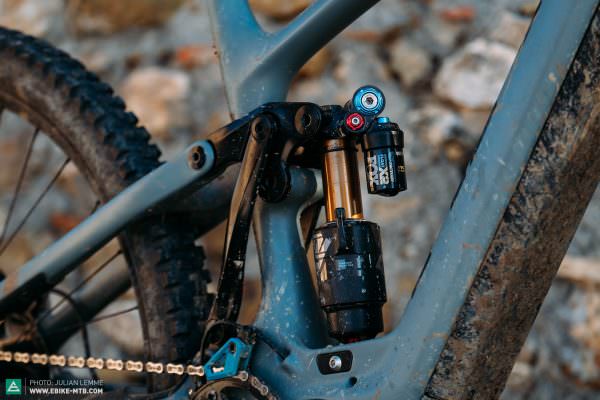
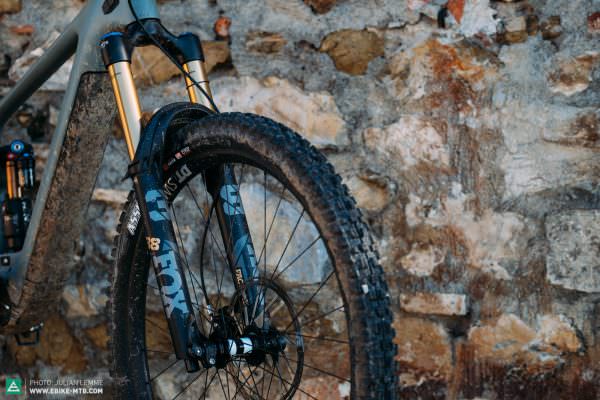
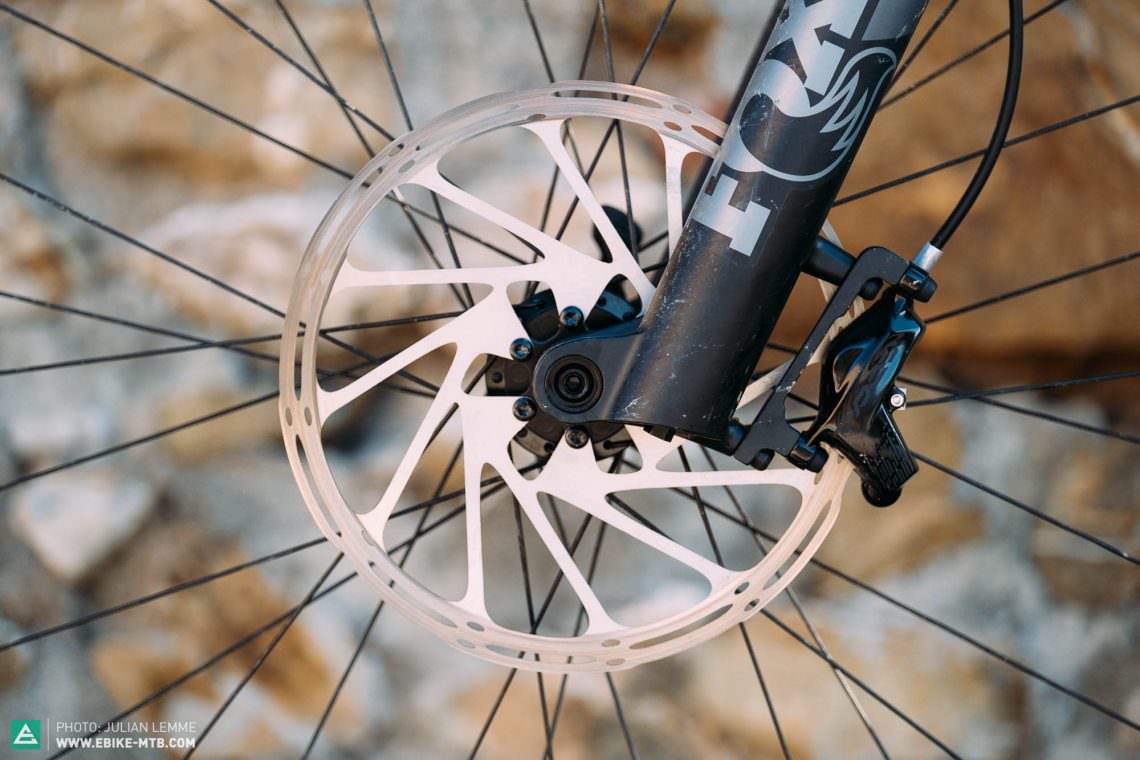
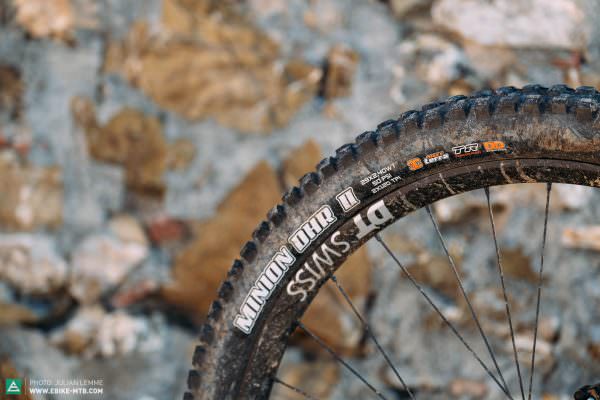
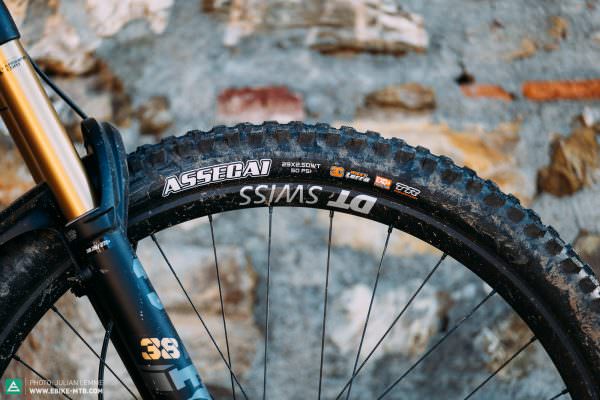
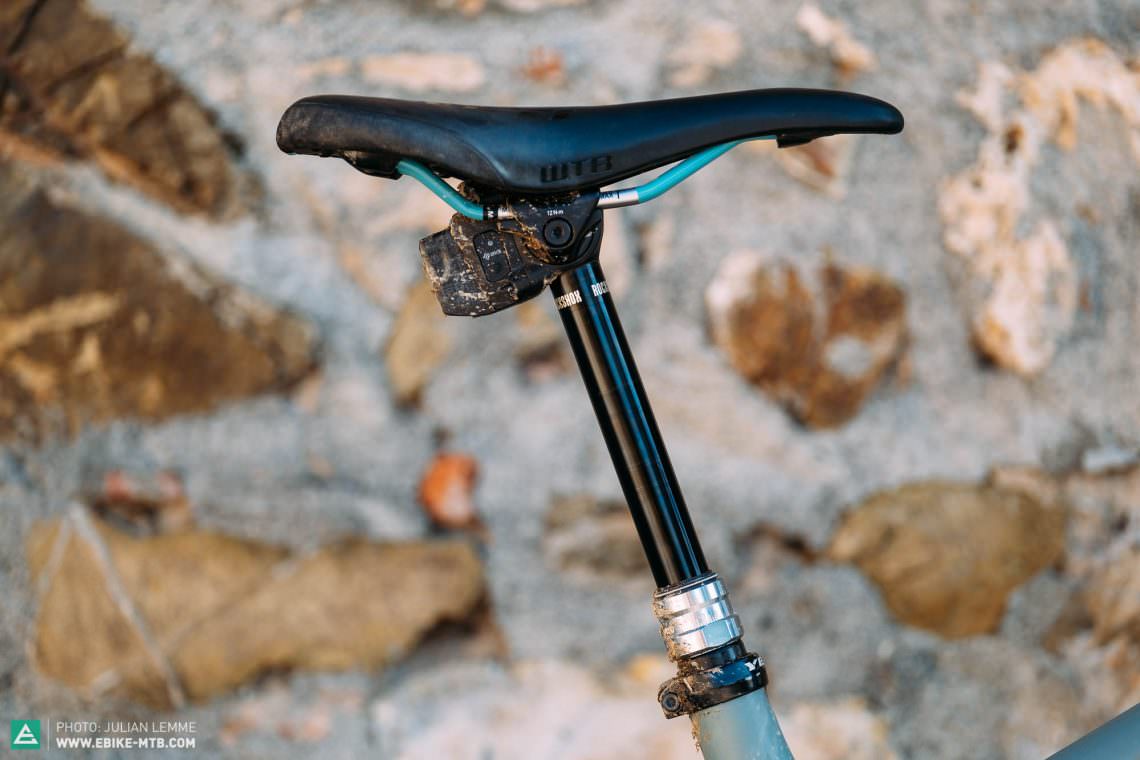
The more affordable alternative: the Yeti 160E C1
At € 10,990, the 160E C1 is almost € 3,000 cheaper than the T1 flagship model. Unlike Yeti’s analogue model range, the entry-level 160E model relies on the same high-quality TURQ carbon frame as its high-end counterpart. To cut the price, Yeti saved on the suspension and components. The bling Factory fork was replaced with a FOX 38 Performance model with basic GRIP damper, which makes a huge difference on the trail, particularly with aggressive and experienced riders. Moreover, the basic SRAM CODE R brakes without Swing Link lever aren’t as powerful and smooth as the superior RSC model – speccing an eleven grand bike with basic CODE R brakes is unacceptable! However, the entry-level model offers significantly more freedom of movement than its high-end counterpart: while the T1 flagship model features a RockShox Reverb AXS dropper with only 170 mm travel, the cheaper 160E C1 comes equipped with a OneUp V2 dropper post, which, depending on the frame size, offers up to 210 mm travel. Excellent!

€ 10,990 | Manufacturer’s website
Yeti 160E C1
€ 10,990
Specifications
Motor Shimano EP8 85 Nm
Battery Shimano BT-E8036 630 Wh
Display Shimano SC-EM800
Fork FOX 38 Performance 170 mm
Rear Shock FOX Float X Perfromance 160 mm
Seatpost OneUP Dropper V2 mm
Brakes SRAM CODE R 220/200 mm
Drivetrain Shimano SLX 1x12
Stem Burgtec Enduro Mk3 50 mm
Handlebar Yeti Carbon eBike 800 mm
Wheelset DT Swiss E 1900 29"
Tires MAXXIS ASSEGAI EXO+/Minion DHRII DD 2.5"/2.4"
Technical Data
Size S M L XL
Perm. total weight 130 kg
Trailer approval no
Kickstand mount no
The Yeti 160E T1 on the trail
The relatively steep seat angle of the Yeti 160E T1 positions the rider centrally on the bike. The stiff rear suspension sits high in its travel and, together with the front-heavy pedalling positions, puts some pressure on the hands on flat trails. That being said, the 160E wasn’t designed for long-distance comfort in the first place, but rather for uncompromised trail performance. As soon as the climb steepens up, the advantages of the riding position become evident. Despite the short chainstays, the front wheel stays firmly planted on the ground, translating steering inputs directly and with clinical precision. With its 85 Nm, the Shimano EP8 packs a punch while the tires and suspension transfer the motor’s power to the ground very efficiently. On technical climbs with tricky key sections, the Yeti 160E inspires confidence and is easy to ride. At the same time, it’s playful enough to make the climb fun, allowing you to drift uphill and wheely out of corners.

Downhill, the Yeti shows its agile and nimble side, turning every trail into a big playground. The active suspension makes it easy to catch air, pop off ledges and generate speed while pumping through rollers – experienced and expert riders in particular will benefit from this. In open corners, the Yeti requires good riding skills and a clean technique to generate traction on the front wheel.
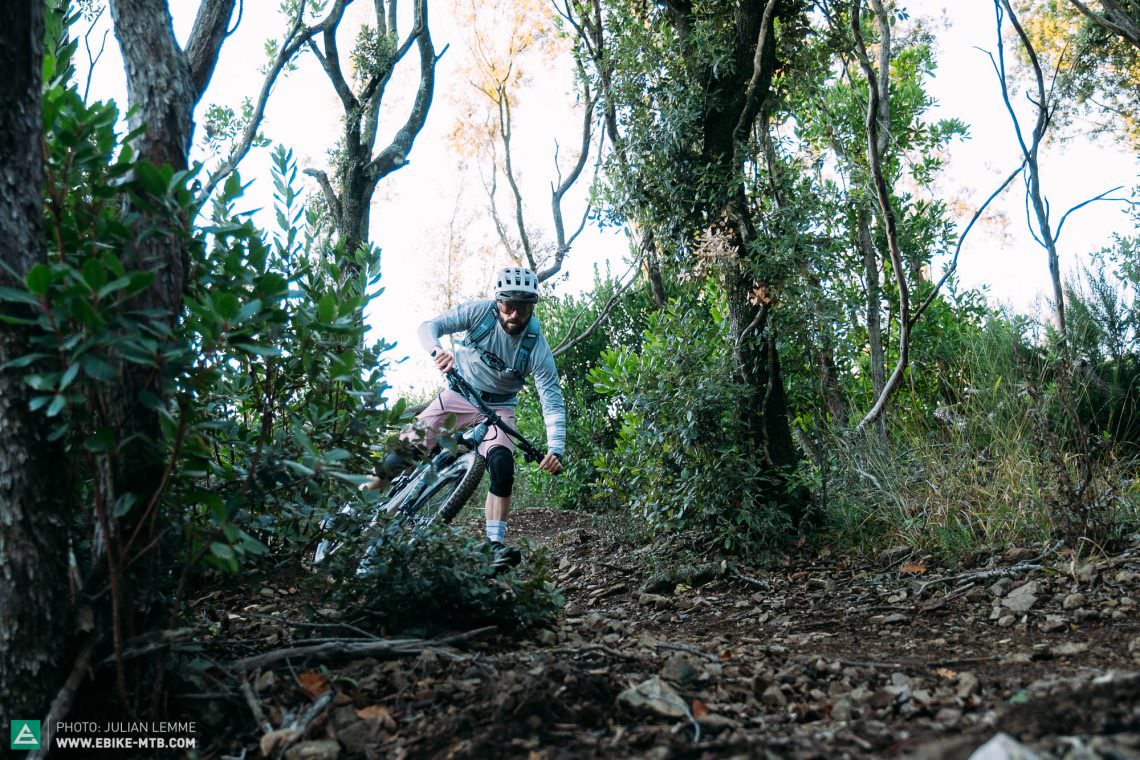
By changing the progression setting (25%, 30%, 35%), you’ll alter mainly the riding behaviour of the bike and the reserves the rear suspension provides at high speeds. In the progressive setting, no drop is too high, no jump is too far and no trail is too hard for the Yeti. A very positive side effect: by increasing the progression, you can run significantly less high-speed compression and still generate excellent grip despite huge reserves. Cool!
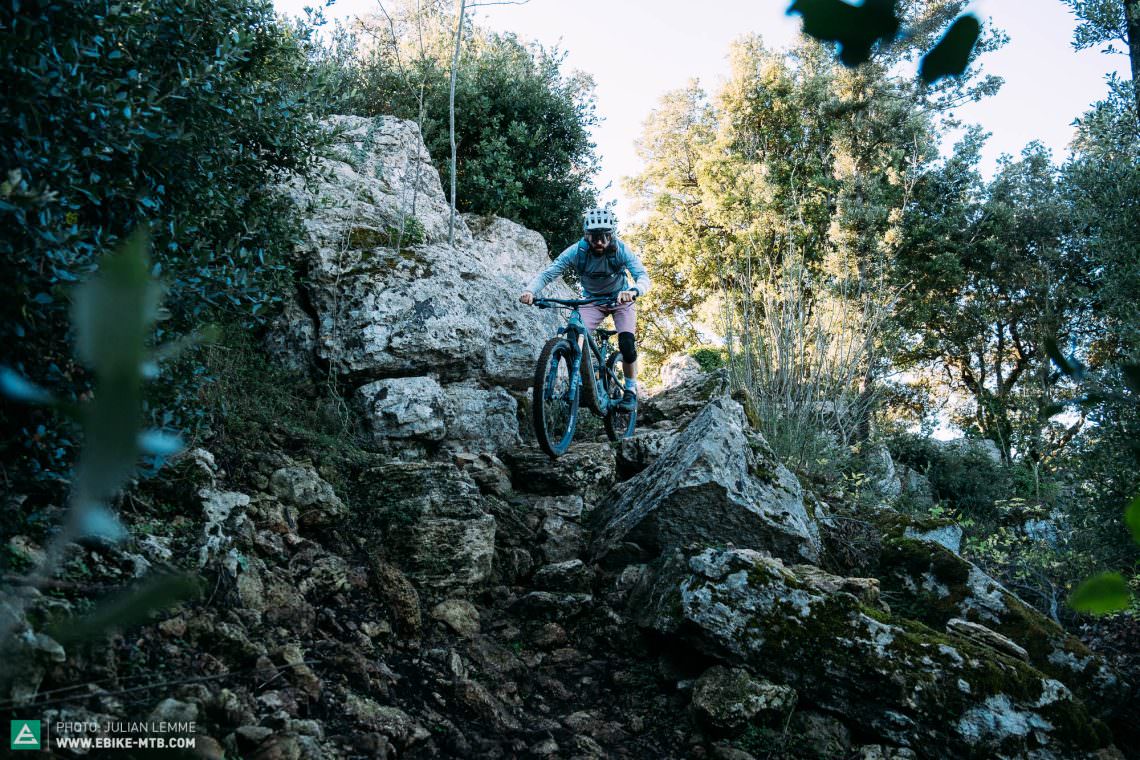
Conclusions
A successful debut indeed! As a sporty eMTB, the Yeti 160E T1 is particularly well suited for experienced and expert riders. The complex suspension system and nearly-perfect spec underline the ambitious character of Yeti’s first eMTB, which was designed to ruffle some feathers in the E-EWS. Although most of you won’t be racing anyway, the handling of the 160E is impressive. We can’t wait to see how Yeti’s first eMTB fares in our big group test.
More information at yeticycles.com
Did you enjoy this article? If so, we would be stoked if you decide to support us with a monthly contribution. By becoming a supporter of E-MOUNTAINBIKE, you will help secure a sustainable future for high-quality cycling journalism. Click here to learn more.
Words: Photos: Julian Lemme









